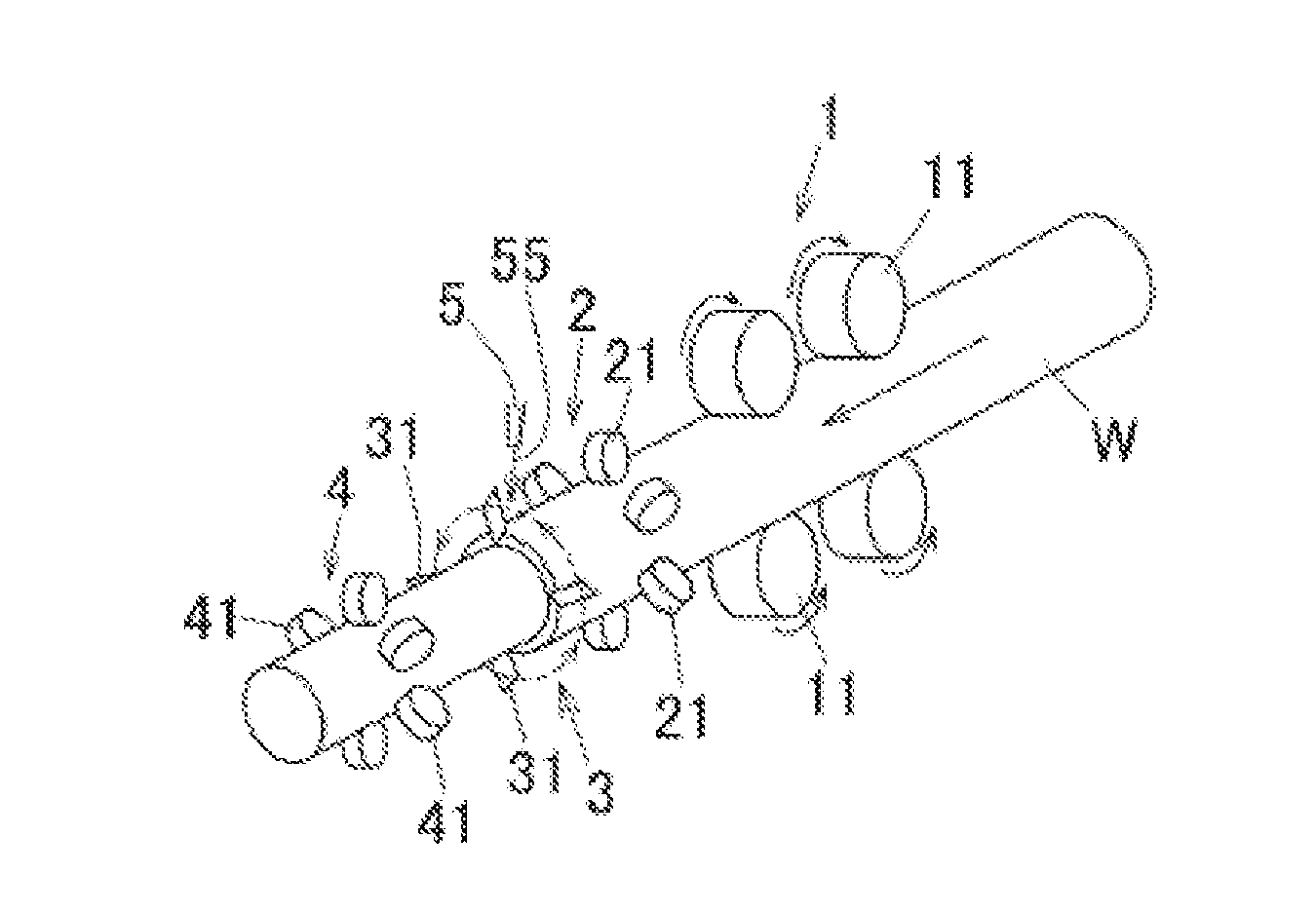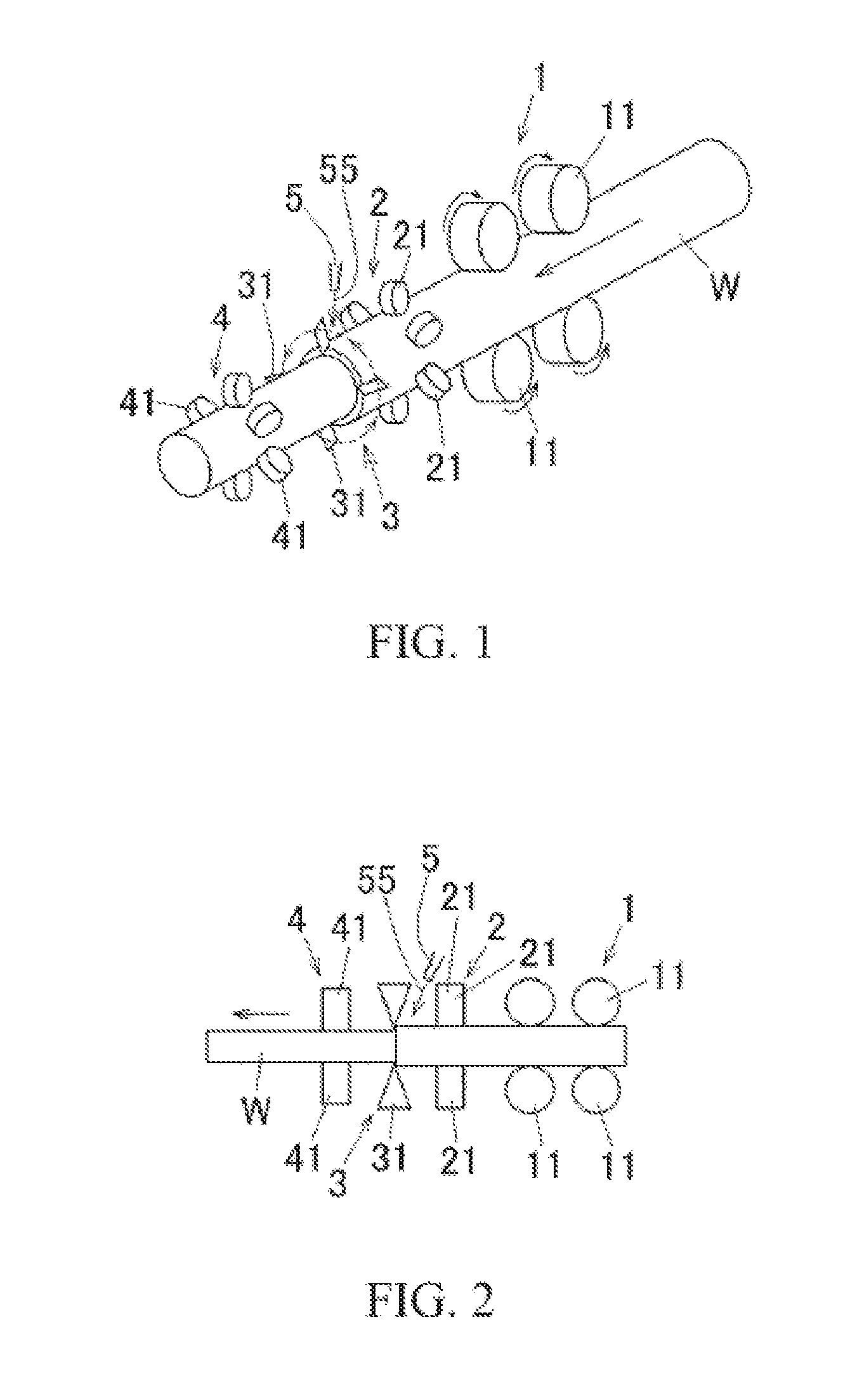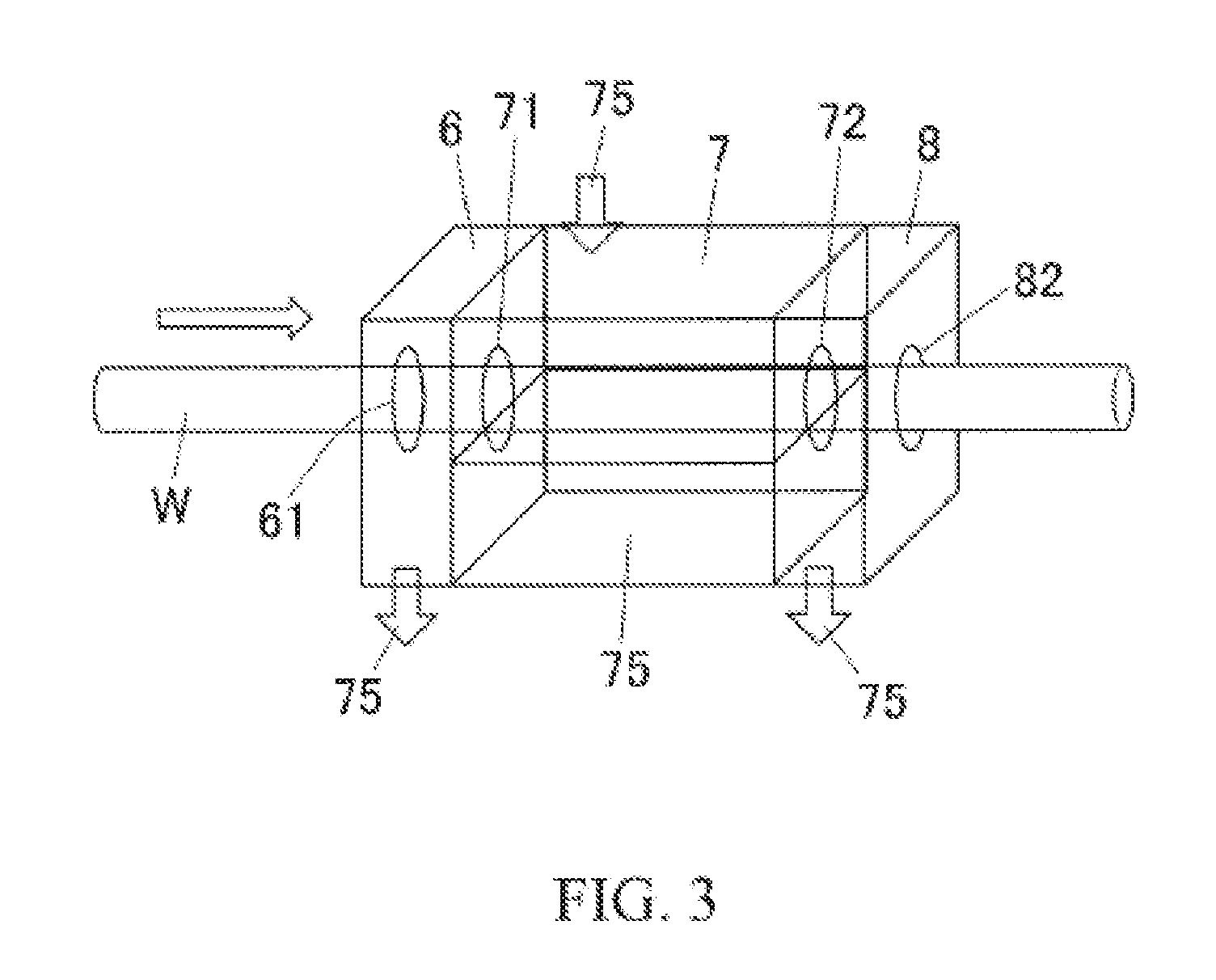Aluminum bar and method for producing same
a technology of aluminum bar and aluminum alloy, applied in the field of aluminum bar, can solve problems such as quality degradation
- Summary
- Abstract
- Description
- Claims
- Application Information
AI Technical Summary
Benefits of technology
Problems solved by technology
Method used
Image
Examples
example 1
[0101]After subjecting a round bar-shaped continuously cast bar (work) produced by continuously casting 4000 series aluminum alloy to a homogenization treatment, the surface was cut by 3 mm in diameter using a peeling device as shown in FIG. 1 and FIG. 2 to produce an aluminum alloy bar-shaped work having a diameter of 25 mm. As shown in the cutting fluid density item in Table 1, in Example 1, as the cutting fluid (machining fluid) supplied at the time of the peeling step, a cutting fluid in which an undiluted solution of a water-soluble cutting fluid was diluted with water so as to have an oil density (density of the undiluted solution) of 1 mass % was used.
[0102]Next, the work after the peeling step was cleaned using a cleaning device as shown in FIG. 3. At this time, 20° C. industrial water (pH 6.3) was used as the cleaning fluid. In this cleaning step, the work was carried at a carrying speed of 20 m / min. Since the length (width) of the cleaning tank 7 of the cleaning device was...
example 2
[0106]As shown in Table 1, except that a cutting fluid having 7 mass % oil density was used at the time of the peeling step, the sample of Example 2 was produced in the same manner as the aforementioned Example 1.
[0107]Further, the oil remaining amount of the sample of Example 2 measured in the same manner as in Example 1 was 19 μg / cm2.
example 3
[0108]As shown in Table 1, a cleaning method in which 95° C. industrial water was used as a cleaning fluid in the cleaning step was used for a work subjected to the peeling step in the same manner as in Example 1, and the work was further subjected to a curvature correction step using a roll straightening device after the cleaning step. Except for the above, the sample of Example 3 was produced in the same manner as in Example 1. Further, in a curvature correction step using a roll straightening device, the same cutting fluid as the cutting fluid used at the time of the peeling step in Example 3 was supplied to the work.
[0109]Further, the oil remaining amount of the sample of Example 3 measured in the same manner as Example 1 was 7 μg / cm2.
PUM
| Property | Measurement | Unit |
|---|---|---|
| pH | aaaaa | aaaaa |
| temperature | aaaaa | aaaaa |
| temperature | aaaaa | aaaaa |
Abstract
Description
Claims
Application Information
 Login to view more
Login to view more - R&D Engineer
- R&D Manager
- IP Professional
- Industry Leading Data Capabilities
- Powerful AI technology
- Patent DNA Extraction
Browse by: Latest US Patents, China's latest patents, Technical Efficacy Thesaurus, Application Domain, Technology Topic.
© 2024 PatSnap. All rights reserved.Legal|Privacy policy|Modern Slavery Act Transparency Statement|Sitemap



